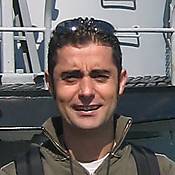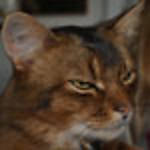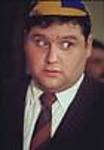You are viewing the archived version of the site.
Go to modelshipwrights.com for the current dynamic site!
Go to modelshipwrights.com for the current dynamic site!
Making Ice and Snow
6
Comments
The last of the freezing winter effects to be presented is the icing effects on the ship hull and superstructure. As reference material I searched the web looking for photos that showed the real life appearance of the effects I was trying to recreate.
Icing (icicles) tend to accumulate on booms, railing, poles, masts , gun barrels…in a greater extent the closer to the water ( this is only my limited impression on what I saw on the studied photos that I found). So there I went. For this effect I used Liquitex™ acrylic gel and a fine point wet paint brush, and applied the gel to the selected elements of the ship models again in a time-consuming, stepwise manner.
With paint brush strokes, spread the gel in a vertically downward direction with a wet paint brush, trying to make an icicle appearing “smear”. Many applications of the gel in this way were required, randomly distributed throughout the above-mentioned parts of the ship model. The gel tends to dry fast once spread and then it can’t be spread anymore. You have to wait until is totally dry before applying a second round of material. The good news is that it would be ready for this second application once you return to the starting point of the application once you make a round, since only a small amount is applied. The following figures illustrate these steps. Figures 15 -18 during the early stages in the icicle making.
Figures 19-22 during the later stages in their making
Icing (icicles) tend to accumulate on booms, railing, poles, masts , gun barrels…in a greater extent the closer to the water ( this is only my limited impression on what I saw on the studied photos that I found). So there I went. For this effect I used Liquitex™ acrylic gel and a fine point wet paint brush, and applied the gel to the selected elements of the ship models again in a time-consuming, stepwise manner.
With paint brush strokes, spread the gel in a vertically downward direction with a wet paint brush, trying to make an icicle appearing “smear”. Many applications of the gel in this way were required, randomly distributed throughout the above-mentioned parts of the ship model. The gel tends to dry fast once spread and then it can’t be spread anymore. You have to wait until is totally dry before applying a second round of material. The good news is that it would be ready for this second application once you return to the starting point of the application once you make a round, since only a small amount is applied. The following figures illustrate these steps. Figures 15 -18 during the early stages in the icicle making.
Figures 19-22 during the later stages in their making
Comments
A very interesting and well accomplished technique Augusto!
It really makes us feel freezing
Congratulations and thank you for sharing this SBS technique with us
Cheers,
Rui
NOV 08, 2010 - 04:41 AM
Yes, thank you Augusto for this SBS. Like Rui said, it makes me feel all cold!
NOV 08, 2010 - 12:18 PM
Thank you very much for those kind words of appreciation, mates!
Augusto
NOV 09, 2010 - 10:55 PM
Well done, Augusto, that was clear and understandable with excellent photography for the visual explanation. FRIZZY WISKERS all round!
Peter F
NOV 10, 2010 - 02:37 AM
Hi Augusto!
A well thought-out and practical special effect technique. Your choice of employing acrylic sawdust is particularly crafty since it won't yellow over time, a crucial factor since we'd like to think our projects will be around a long time.
--Karl
NOV 10, 2010 - 05:14 AM
Copyright ©2021 by Augusto Martinez. _OPINIONS Model Shipwrights, KitMaker Network, or Silver Star Enterrpises. Images also by copyright holder unless otherwise noted. Opinions expressed are those of the author(s) and not necessarily those of Model Shipwrights. All rights reserved. Originally published on: 2010-11-08 00:00:00. Unique Reads: 13179





















